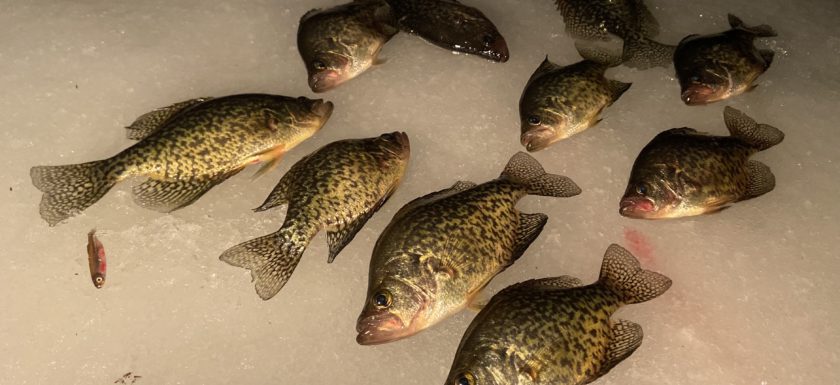
The Black Crappie is more than just a panfish! It is an elusive and handsome member of the bass family… It’s a fish that I get excited about when the ice is on the lakes. In Central New York healthy populations of Black Crappie can be found in many of the lakes and ponds of the region. These tasty fish are quite unique in their habits and often it takes a special approach and fine tuned tactics to be successful at catching them.
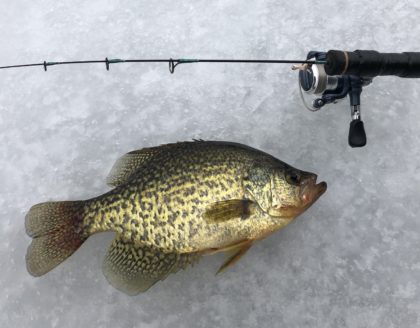
Shallow, weedy bays and lakes with clean clear water provide the optimum habitat for Black Crappie. They are a slow growing fish that are piscivorous… Meaning they like too eat minnows. This characteristic causes them to school heavy at certain times of the year. While the Black Crappie is an opportunistic fish and eats aquatic insects (nymphs) and freshwater amphipoda (scuds, shrimp), wintertime schools of Black Crappie get aggressive for minnows!
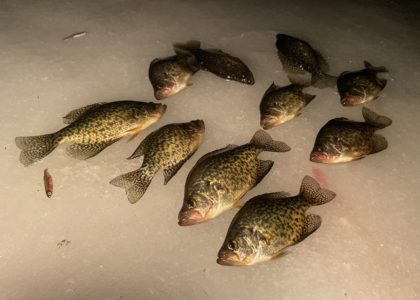
The Black Crappie occupy the same haunts as largemouth bass and bluegill but they behave differently. They can be quite nocturnal, most active in low light conditions. They feed long before and after most hardwater anglers are on the ice.
In fact, many ice fishers often don’t realize their favorite panfishing spots even have solid populations of Black Crappie because they never catch any during the daylight hours while fishing for other diurnal panfish like bluegill and perch.
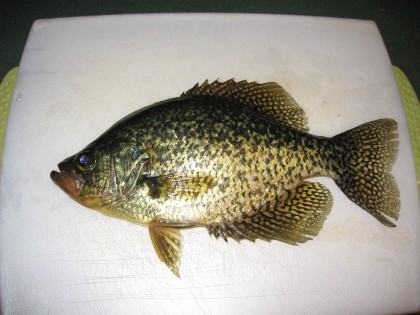
When exploring a new lake that is known to have a population of Black Crappie, I try to find the thickest, healthiest weed beds closest to the deepest water. This is done with a boat during the late summer. These weed edge/deep water locations are captured with handheld gps and the coordinates are pulled up later when I am walking on the lake to go ice fishing!
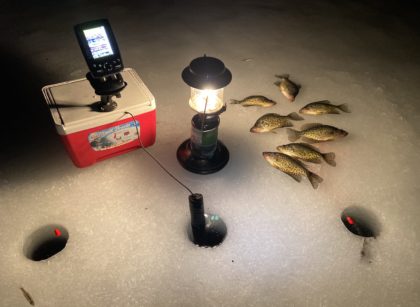
Early in the morning or late in the evening, when the ice is safe, I return to these locations and suspend live minnows in the center of the water column, or slightly above, close to the weed edge. If all goes as planned, small schools of mature crappie on the prowl eventually swim by and slurp up my minnows! As the winter progresses these schools can grow in numbers and once hot spots are located, well, it can make for great ice fishing and a killer Friday Night Fish Fry!
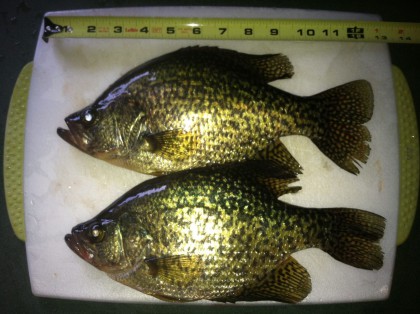
My preferred way to fish for Black Crappie is with super light fiberglass rods and three pound test fluorocarbon. A slip bobber system is rigged and a simple long shank aberdeen hook and small split shot pinched on the line a foot above completes the terminal tackle required.
Crappie are notorious light biters. They will swim in and inspect the minnow and then take it and slowly swim away. The hook set is best when delayed, allowing the crappie to take the minnow several feet away from the hole. A stiff, but not sharp, upward lift of the rod and a gentle working of the reel will get the paper mouth on the top side of the ice. Too much and too fast and the hook will pull free and the slab will swim away!
The best times to night fish this technique for Black Crappie is when the barometer is stable and the ambient air temps are above freezing. Black Crappie, like all warmwater, shallow dwelling fish, are affected by spiking barometric pressure. Windy, cold days when a front is moving in or out… Not so good. But a low pressure system that is parked with some precipitation and light and variable winds, well, that’s the time to go!
Good luck and stay on top!

